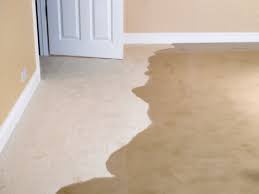6 Ways To Prevent And Protect Your Home From Water Damage
You are away from home and some mishap happened and there was a breaking or leaking pipe. How problematic it would be when the water burst could create issues. Never say that water damage is no big deal. It is a big deal and it can have dangerous effects on your body. But you should protect your home from water damage. Read on and get the final solutions.

You Must Check The Faucets Regularly
Often, you will see that small pipes and faucets that would leak can also create issues. But, you tend to ignore the same. So, make sure that you take time and check the pipes and faucets daily. Whenever there is a problem with the same, you must get it repaired. Even a small problem can turn out to be a big one later. So, make sure that you take the right steps at the start only.
When You Go Out Of The Station, Shut The Main Valve And Go
If you are going out of the station then you should shut off the main valve. This will ensure that you can stay away from any major problems related to water damage. Some people do not even know where their main valve is. You can take the relevant steps and Carpet Water Damage.
Use Caulk Or Shower And Water Tubs
If you are looking forward to adding extra safety then you should add caulks to the shower tubs and water tubs. These are not expensive at all and so you should install them.
Add Floor Pans
If you feel that a water leak can be from below the ground then you can add floor pans. This will help you to stop the water leak. Also, it will protect the other equipment and the floor.
Add A Water Flow Monitor
It is vital that you add the water flow monitor and this will help you in getting a better idea about what you need to do. The monitor will provide you with an idea about how you need to be open to basic things. If you get the signal at the right time then there would be no chance of water damage. You can even install water leak alarms alternatively as they will help you in getting the best solutions.
Install The Sump Pump
The sump pump is an important piece of equipment that will help in removing the extra water from the basement.
Conclusion:
Water damage can create losses that even burglary won’t create. This can be bad for the safety of the people staying on the premises. It is therefore vital that you take the above safety measures and make your life easy to live. If there are issues then they can create problems and so to stay away from these things your main consideration should be to stay open to the basic ideas. Prevent your home from the effects of water damage and see how you can save your family from losses. So, to avail of our services, you should contact us for booking an appointment. You can call us at 03 4050 7972.

